What you need to know about hiking in Switzerland
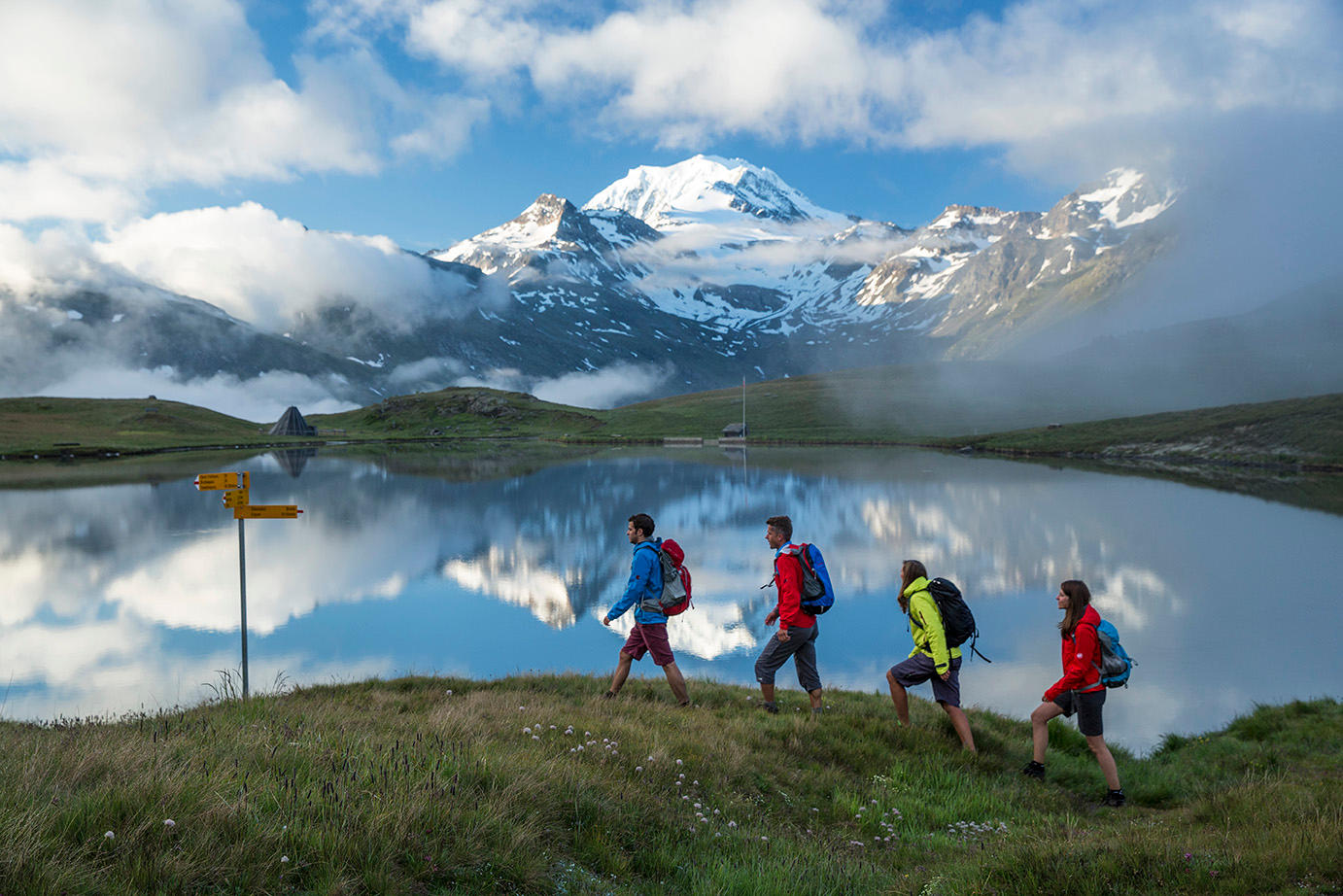
Switzerland is perfect for hikers. With 65,000km of marked hiking trails, there are routes for every ability level. Here’s a map of the network:
Before you pack your rucksack, put on your hiking shoes, and hit the trail, have a look at these tips we’ve come up with for you.
Where can I find inspiration?
Switzerland MobilityExternal link offers a comprehensive index of hikes listed by location, theme and fitness level required. Switzerland Tourism has narrowed it down to the “32 most enjoyable hikes”External link. Other excellent resources are the Swiss Hiking Trail FederationExternal link and the Swiss Alpine Club (SAC)External link. User-generated site Hikr.orgExternal link is constantly being updated with the latest tips in several languages. The Federal Office of TopographyExternal link sells a collection of detailed printed maps.
How do I know if it’s an easy or hard route?
Signposting is consistent throughout Switzerland (and Liechtenstein) thanks to the efforts of hiking enthusiasts in the 1930s.
Trails that require the least amount of effort are marked with yellow signs or arrows, often featuring a figure with a backpack and walking stick. Signs marking altitude, junctions and distances are also yellow, and can mark different types of trail. These give an estimate of the time it should take to reach the nearest points, including train stations and bus stops.
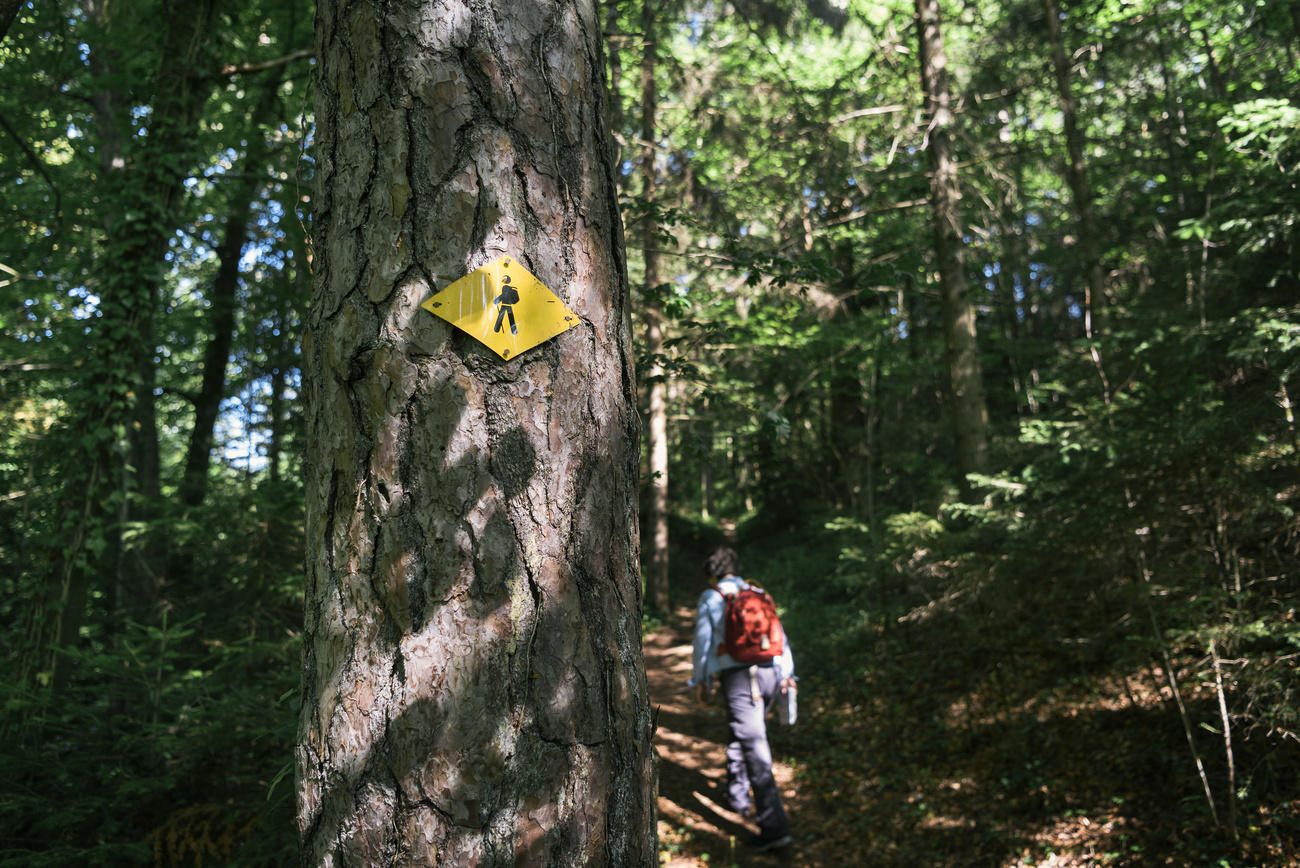
Red-and-white signs, often painted on rocks, mark trails where hikers can expect steep and narrow passages. “Users should be sure-footed and vertigo-free, and in good physical condition, as well as aware of mountain dangers,” notes the hiking federationExternal link.
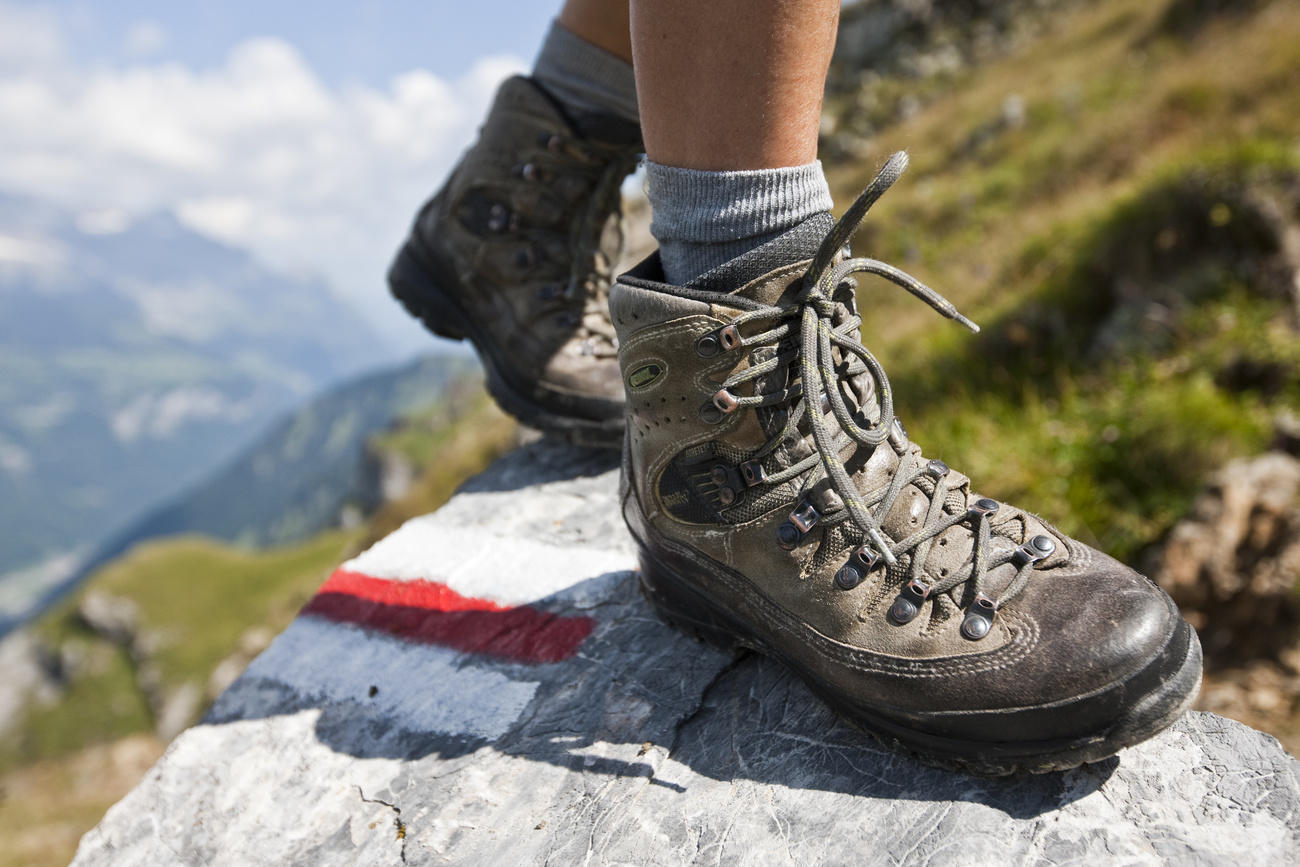
Alpine hiking trails are indicated by blue-and-white signs. These often cross snow fields and glaciers, and might require some climbing with a rope, pickaxe and crampons. As the glaciers melt, these trails are becoming more challenging.
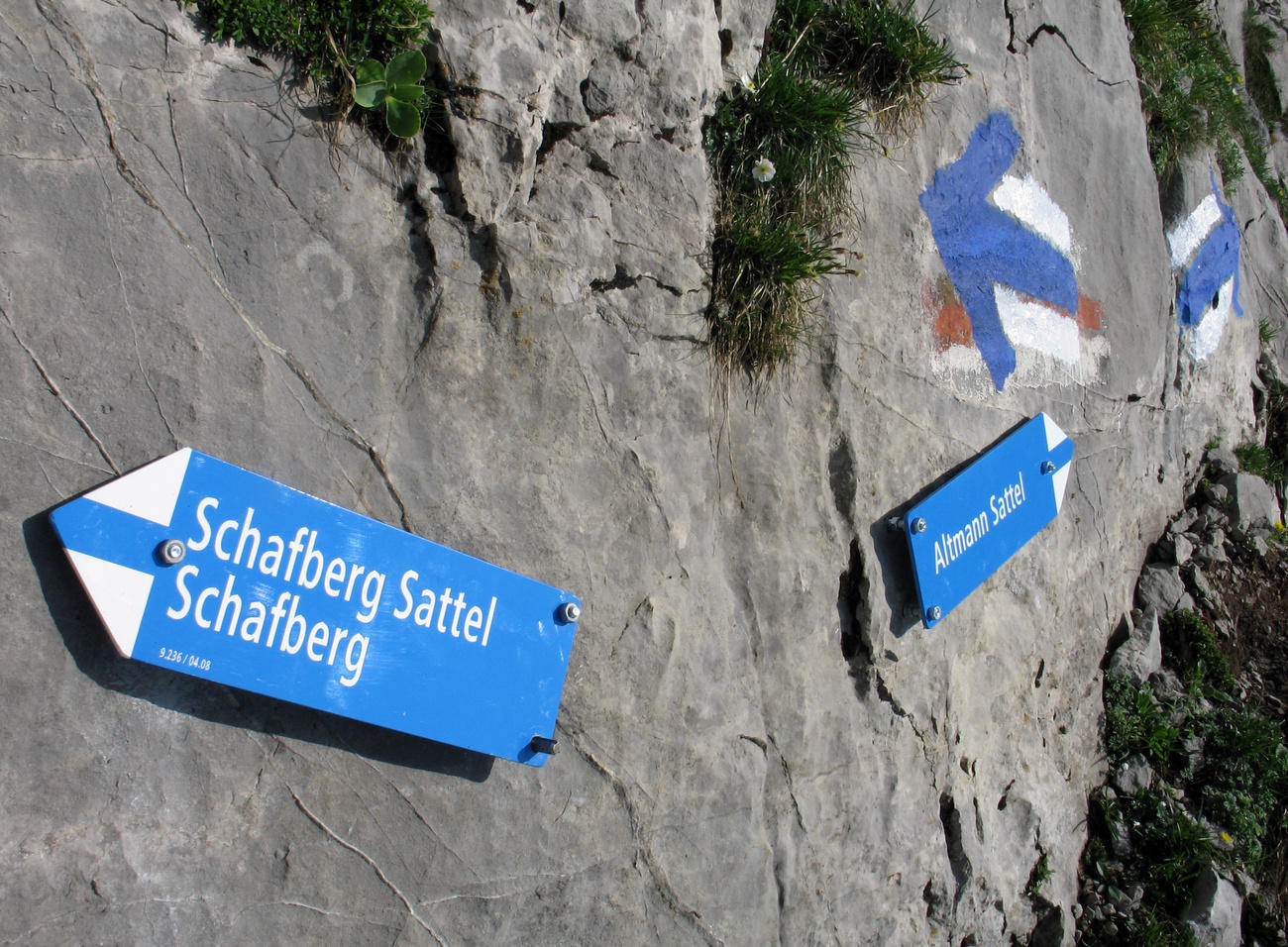
In winter, the snow transforms many basic yellow trails into seasonal winter hiking paths. These are marked by pink signs. No special gear is needed except for decent winter boots with treads to handle any icy bits.
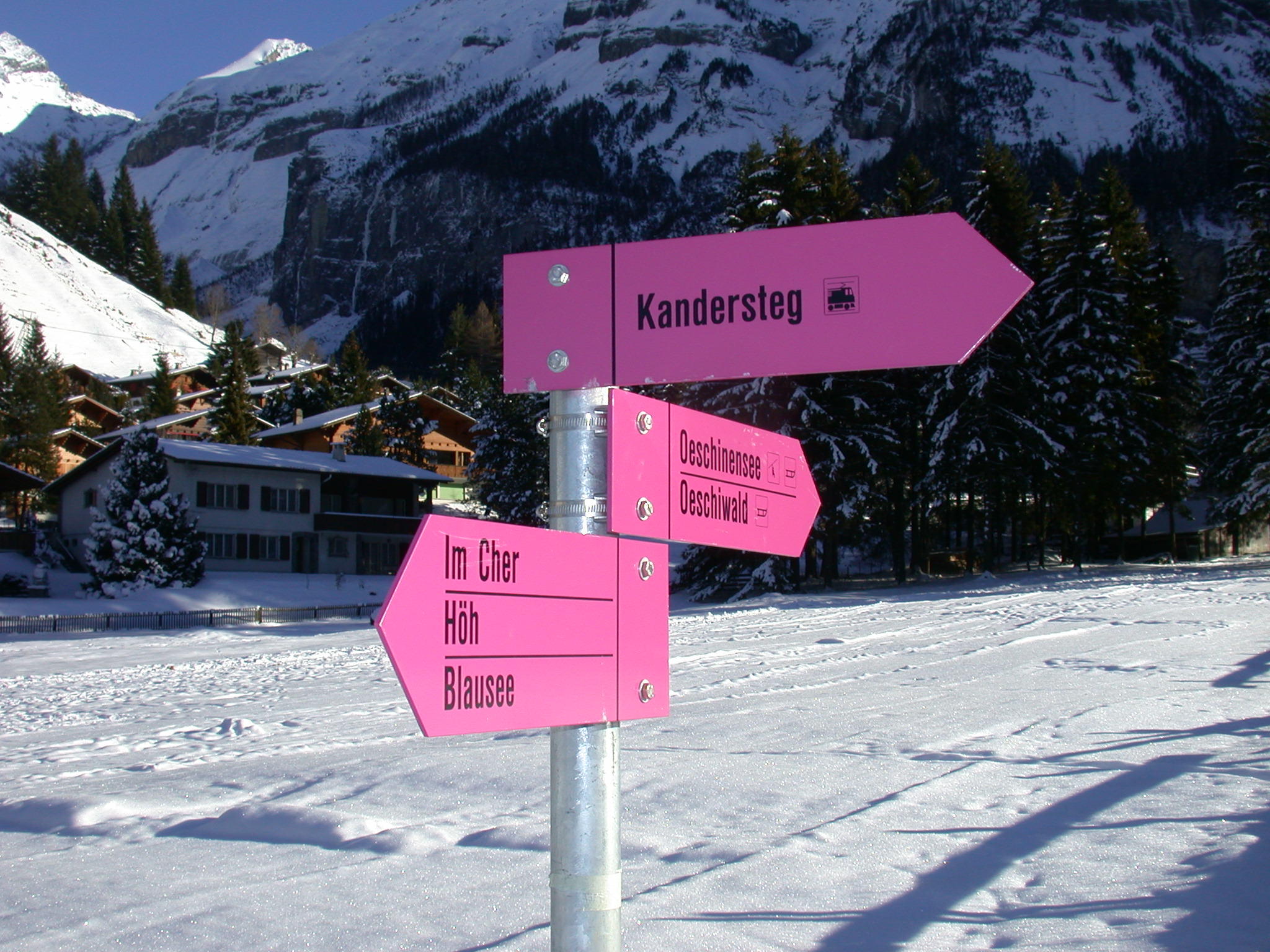
Where can I check the weather?
Always double-check the weather before setting out, as precipitation can translate into slippery rocks. The national weather service, MeteoSwissExternal link, provides detailed forecasts including hazard warnings, such as for high winds or avalanches. If possible, find out if your destination is enveloped in fog by viewing the webcam feeds of nearby cable cars or huts.
Who maintains all these hiking paths?
In a piece of legislation that is unique worldwide, Article 88 of the Swiss constitutionExternal link requires that Swiss footpaths and hiking trails be kept in good, safe condition. Maintenance work is commissioned at the cantonal and municipal levels. Some 1,500 volunteers and helpers take on tasks like cutting back branches, repairing steps and adjusting signposts.
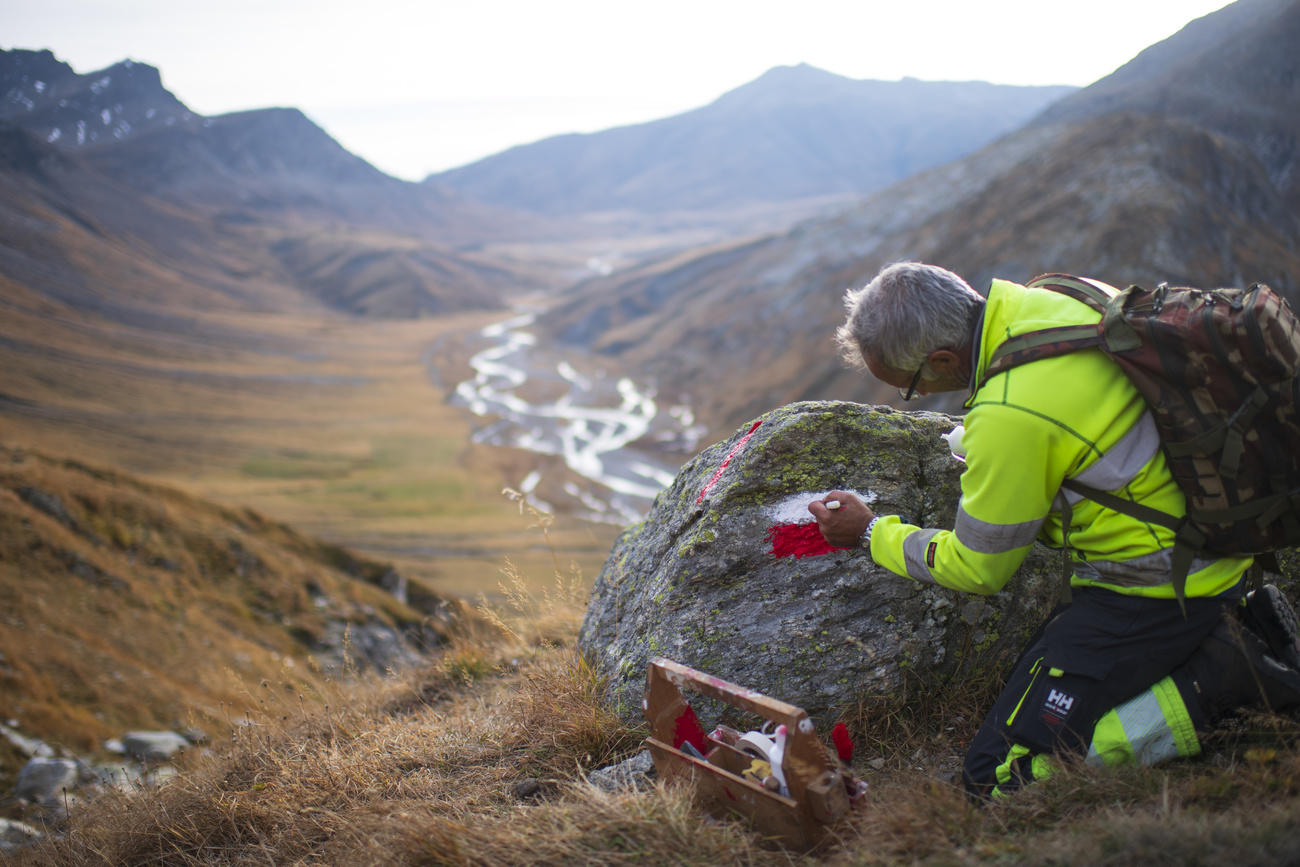
How much does hiking cost, and who pays?
Apart from shortcuts such as cable cars and the occasional hiking hut break, the national sport is free for all hikers. The money for maintaining the network comes from the cantons and donations. Annual investment totals around CHF53 million ($53.4 million). According to the hiking federation, this includes operational maintenance, repair and signposting of the network and other costs. Also, the SAC invests several hundred thousand francs per year to maintain and improve access to its huts.
How safe is hiking in Switzerland?
It’s important to make sure you’re on the right track. But no matter how experienced or careful you are, there’s always an element of risk. Each year, about 20,000 hikers have an accident in Switzerland; a few dozen die.
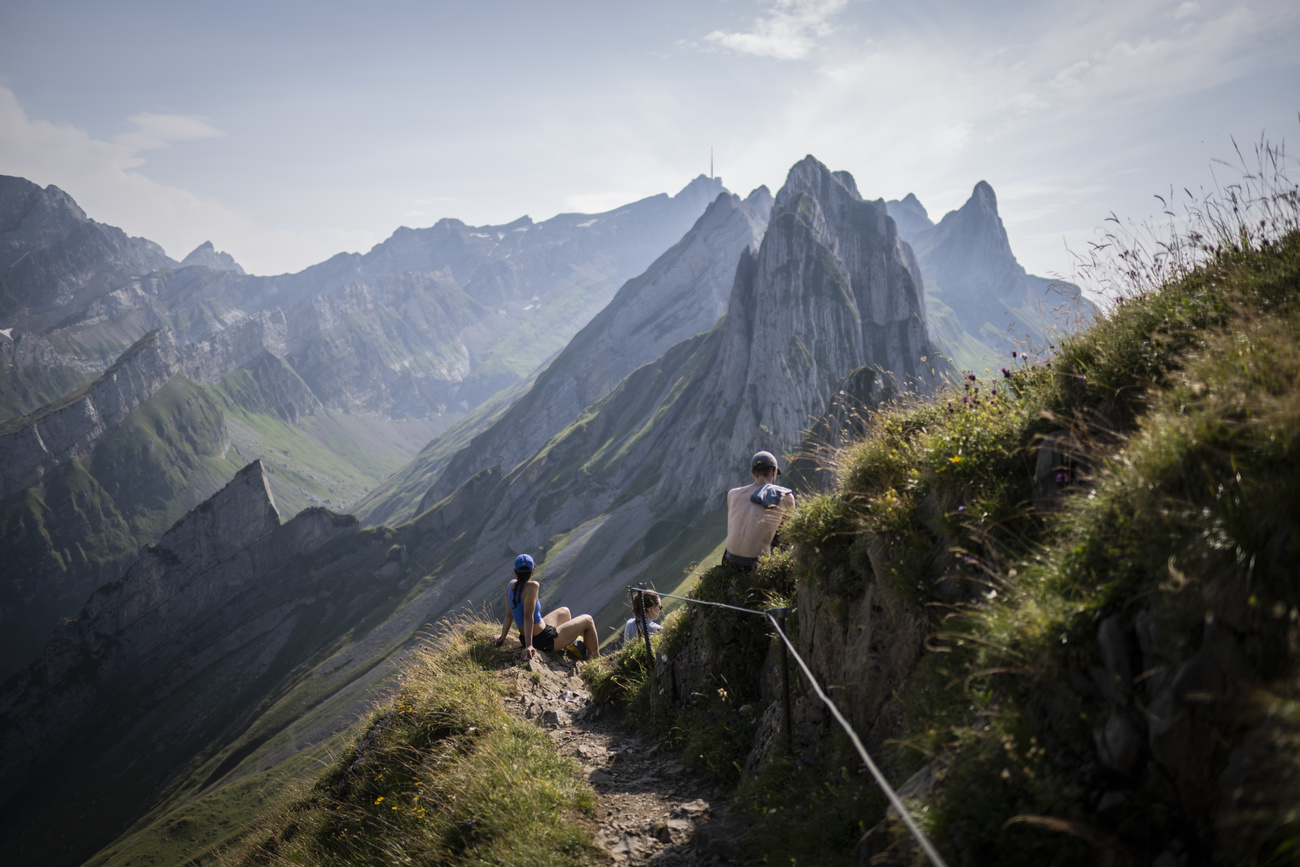
More
Mountain accidents in Switzerland: the figures
“Dangerous and often hard-to-pass channels and gorges are emerging in the seams between retreating glaciers and the moraine or rock,” Hans-Rudolf Keusen, a geologist who serves as the SAC’s co-president of huts and infrastructure, recently told Swiss public television, SRFExternal link. Local authorities generally block off trails as soon as they know of a problem. Hikers can always check with the hiking federationExternal link or the SACExternal link for advice.
Being prepared to cope with an accident is wise. In this video, Ian Spare, president of the Union of International Mountain Leader AssociationsExternal link, shows us what he’s got in his hiking rucksack:
It is also important to watch out for herds of cows with calves, as the mothers are very protective. However, in agricultural zones you can expect to find electric fences even if there are no cattle in sight.
Hiking this weekend? Here’s how to cross an electric fence. (Make sure you’re not walking into a herd!) More tips here: What you need to know about hiking in Switzerland – https://t.co/pGRFIuHzoyExternal link pic.twitter.com/LcsV9X3fnDExternal link
— Susan Misicka (@SMisicka) October 26, 2019External link
More

More
Tick bites and habitat increasing in Switzerland
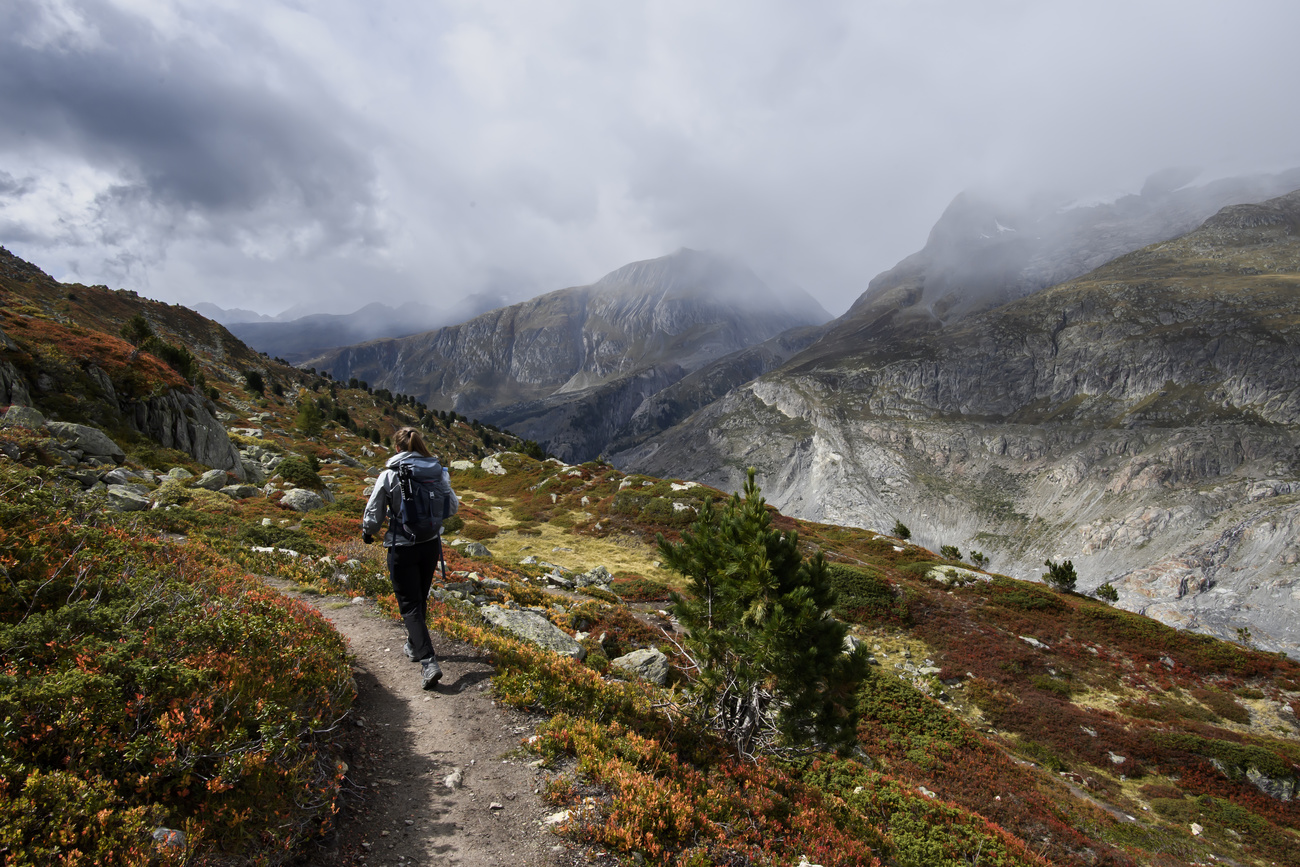
More
Online test launched for hikers to minimise accident risk
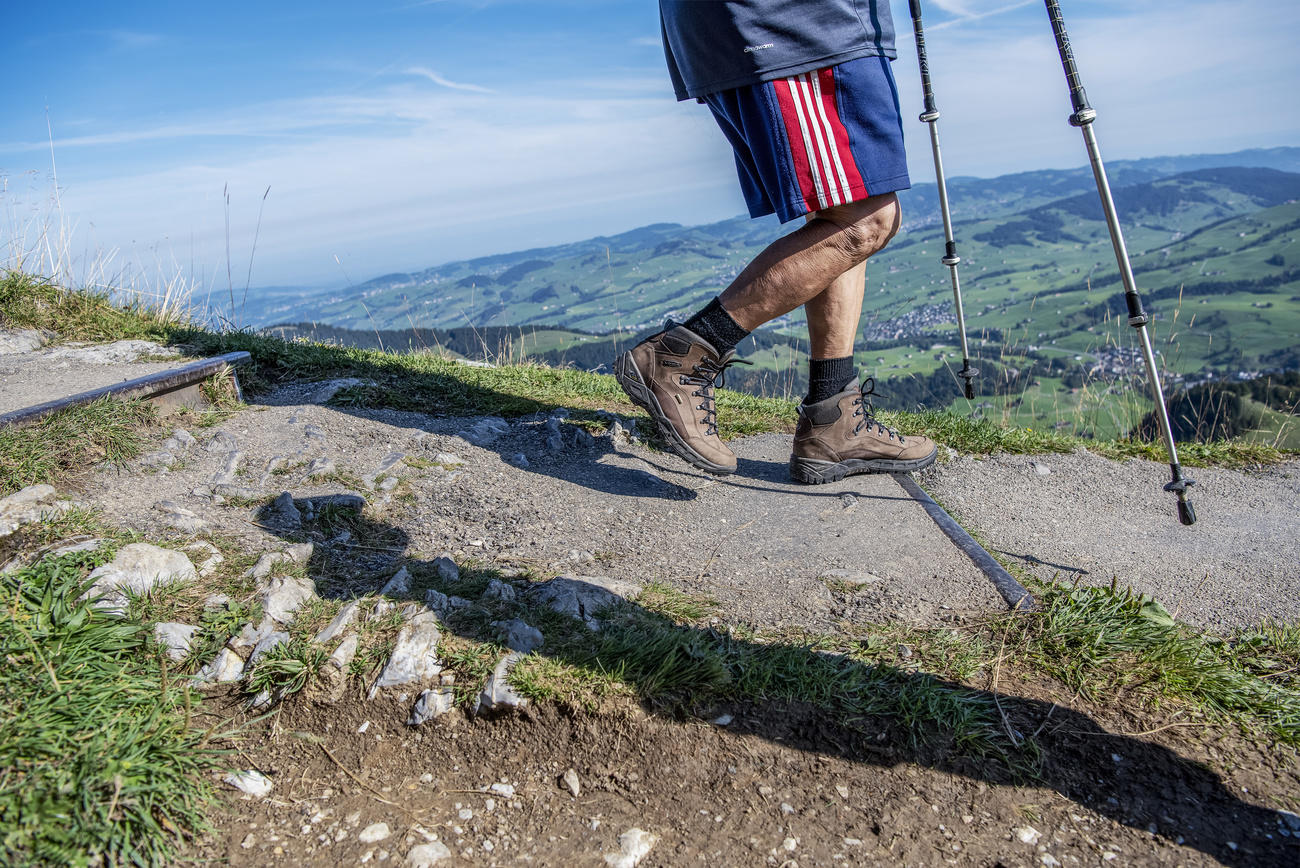
More
Why hikers want the wild taken out of wilderness

In compliance with the JTI standards
More: SWI swissinfo.ch certified by the Journalism Trust Initiative









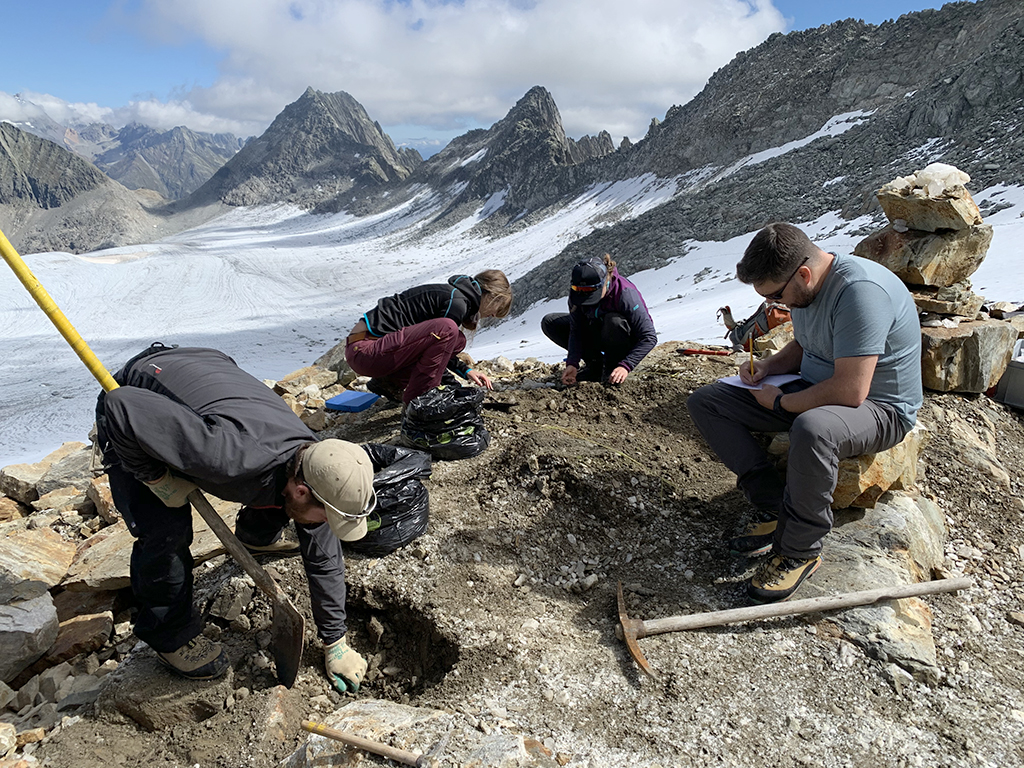

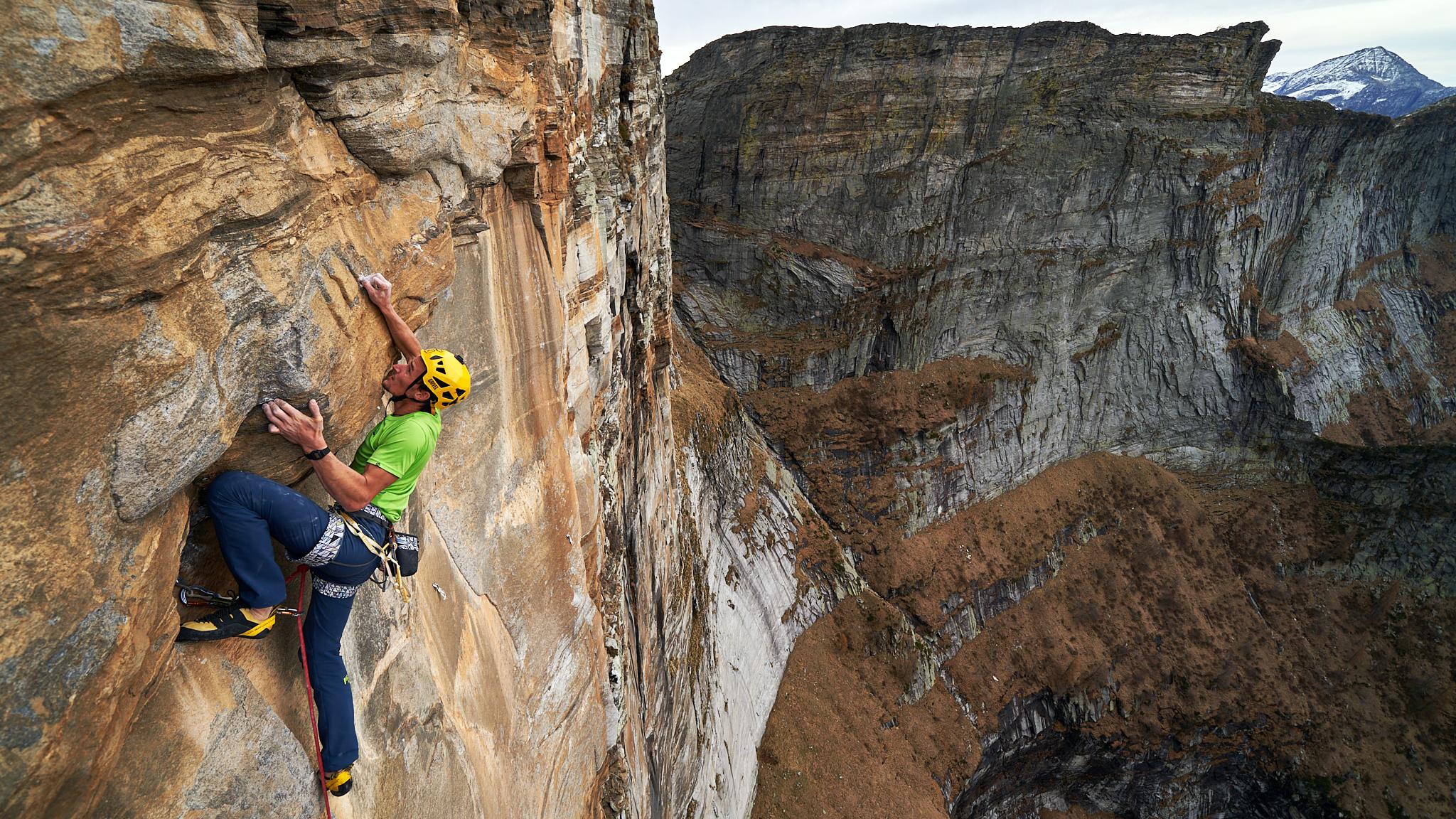


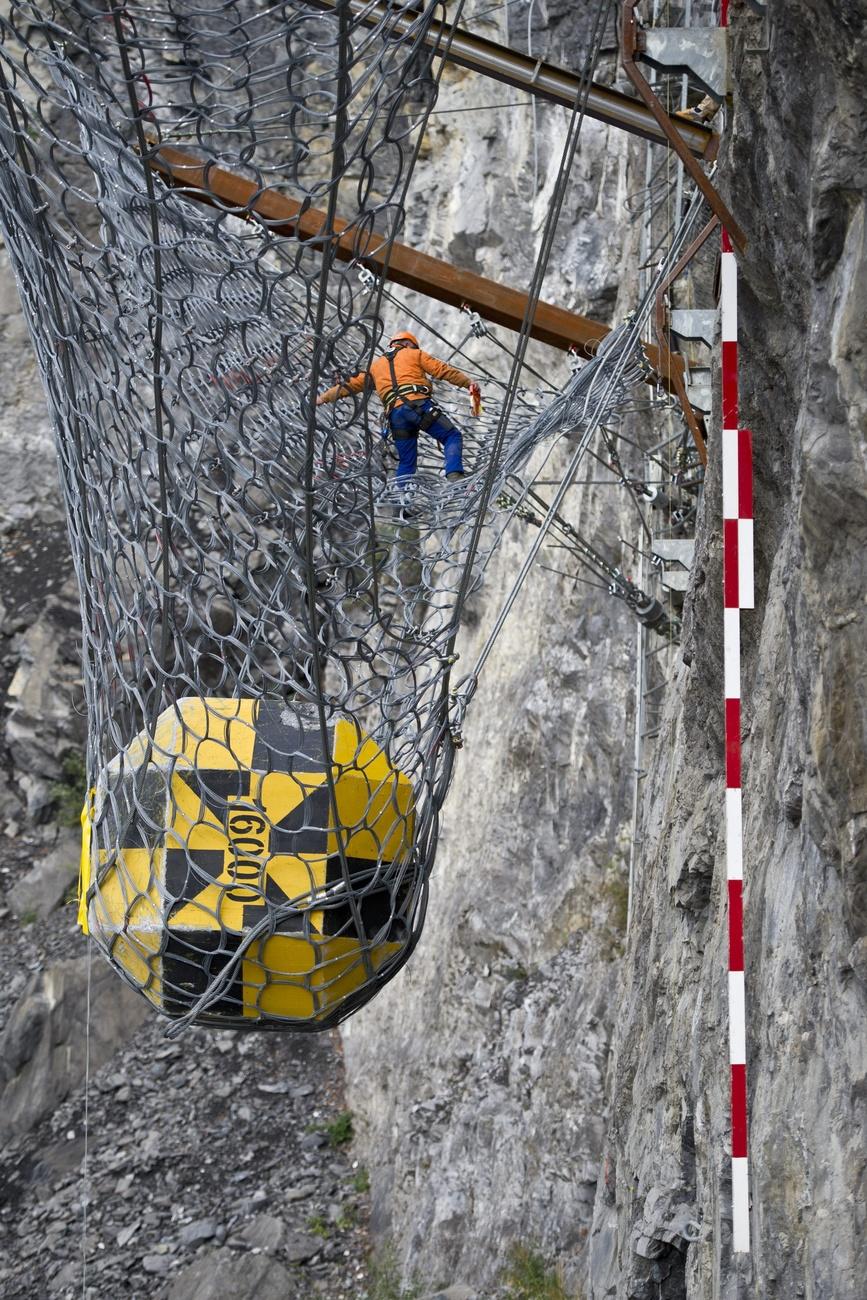
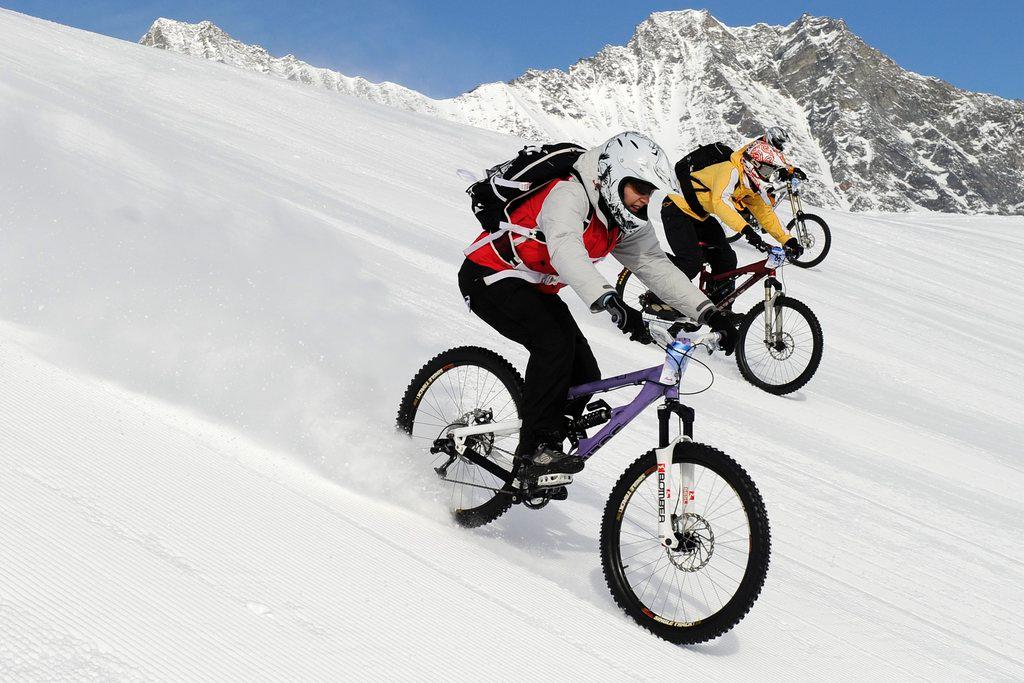
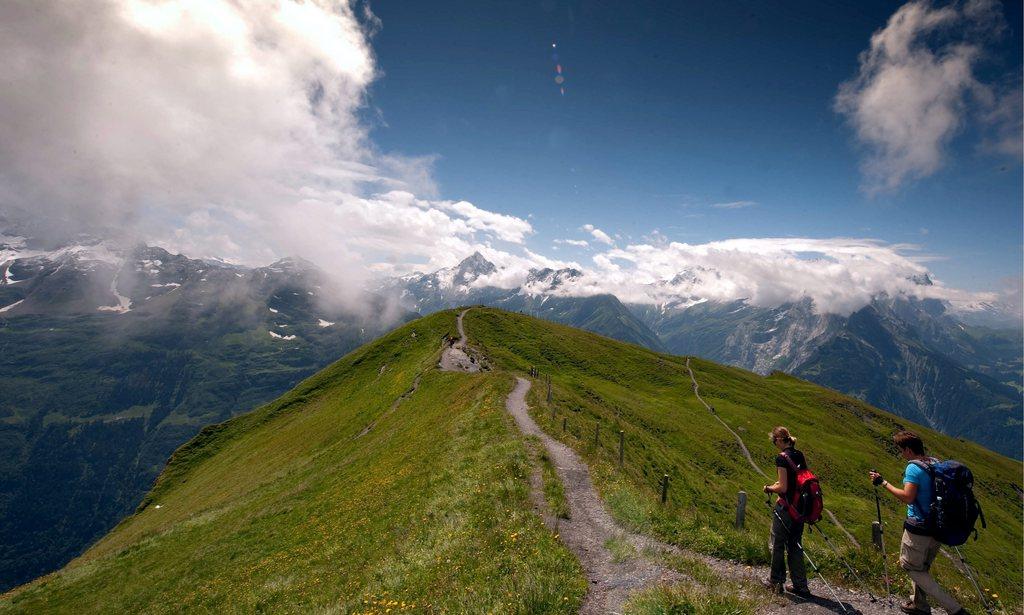

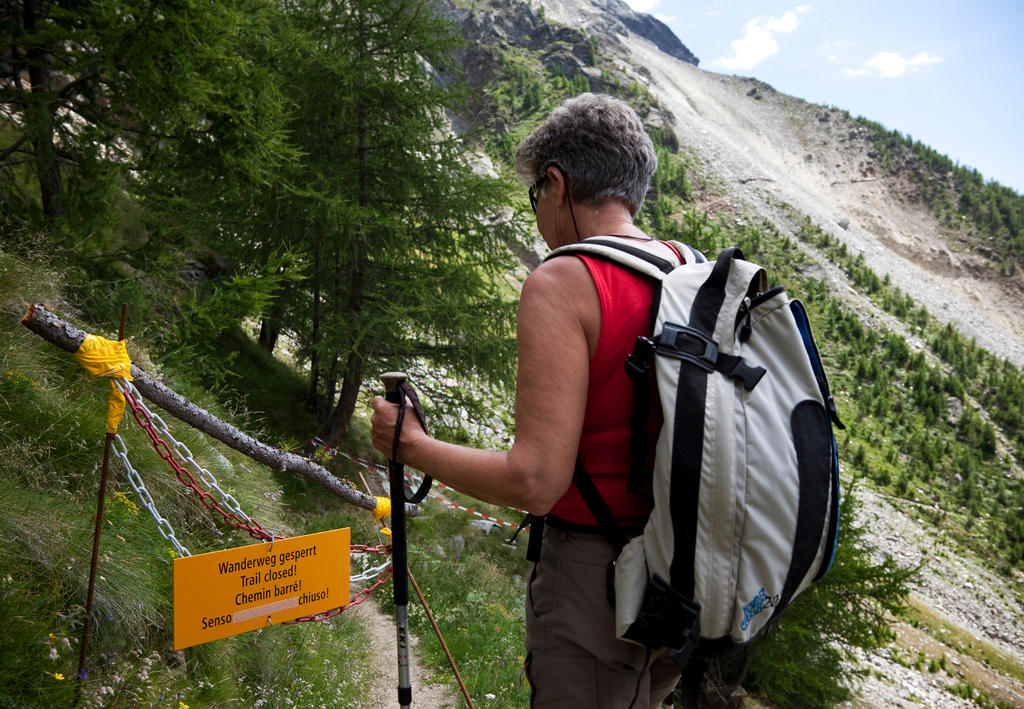

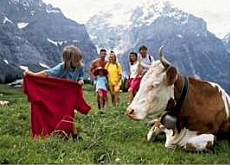
You can find an overview of ongoing debates with our journalists here . Please join us!
If you want to start a conversation about a topic raised in this article or want to report factual errors, email us at english@swissinfo.ch.